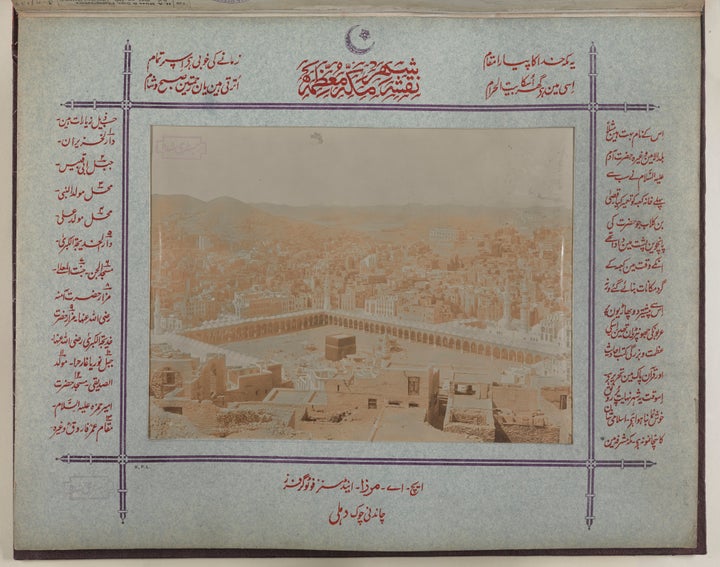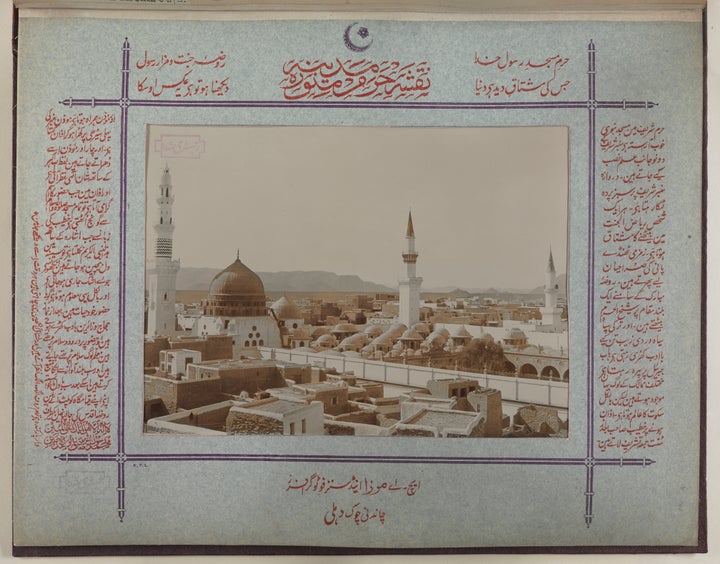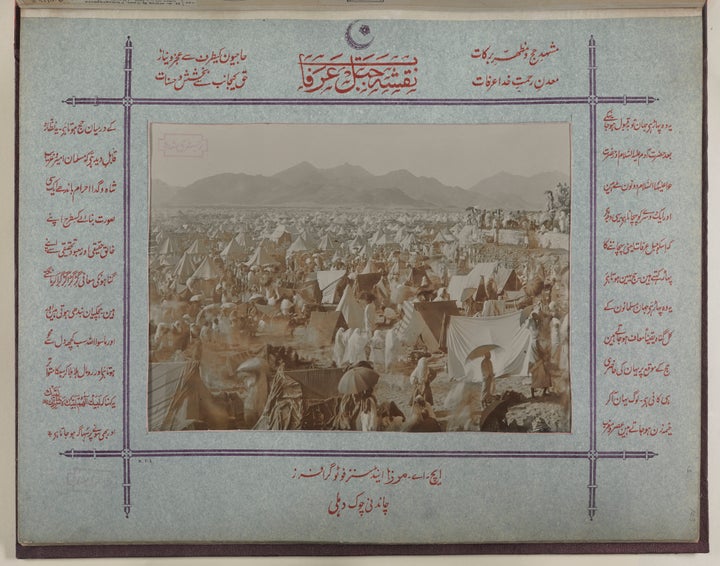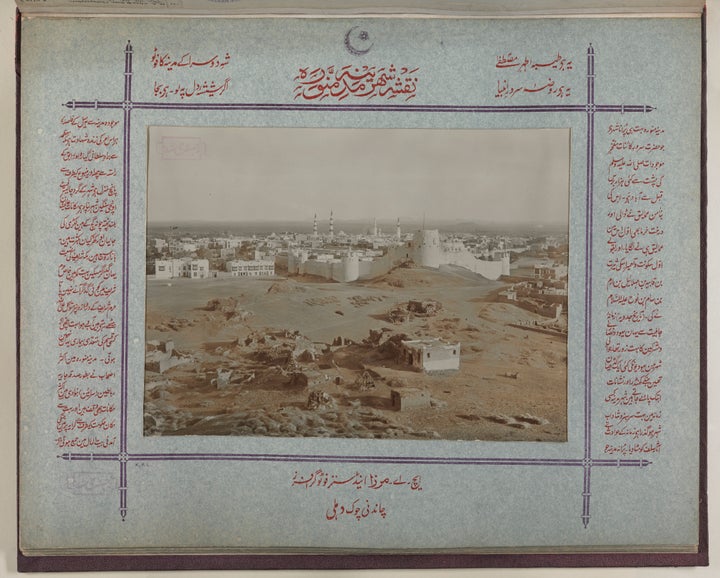One of the world's most spectacular gatherings takes place each year in Mecca as millions of pilgrims converge on the holy city to carry out their religious duty.
It is, of course, the hajj.
To celebrate this most fascinating of human endeavours, I will be making some visual comparisons between today's hajj and those of a century past.
Let's set the scene: we recently digitised a photo album from our collections showing historical and architectural views of Mecca and Medina (the city holding the Masjid al-Nabawi, or 'Mosque of the Prophet', which contains Muhammad's tomb) dating back over a century to around 1907. Our visual arts curator, Anna Canby Monk, thinks there is only one other album like this in the world - what an asset!
This album (by H.A Mirza and Sons) shows a South-Asian Muslim perspective of the hajj. It offers a unique viewpoint of what the pilgrimage was like at the time, and the great thing about photographs is that you can draw your own conclusions on the differences between now and then.
At the time, images like these were often sent as postcards, perhaps to those family and friends who could not afford to make the journey themselves. These photos were commemorative objects; the writing surrounding the images on the mount makes this clear.
As we venture further into the British Library Qatar Foundation partnership programme, we are encountering more materials that have direct relevance to the modern day. These images show just how the ties with past and present are becoming increasingly strong through our partnership, as more content emerges from the British Library's basement.
A selection of photos is displayed below with details of their significance and what they can tell us about the area and the groups of people travelling at the time. Please do comment or send me any questions if you have them.

This image shows the Kaʿbah (the sacred cuboid building in Mecca) and Sanctuary at Mecca from an elevated position due East of the Masjid al-Haram, or Grand Mosque. Parts of the northwest of the city of Mecca are visible in the background.
A magnified inspection of the scene reveals an extensive and detailed view west-northwest of the city including many Ottoman-era and earlier structures, including a large white-washed building which is situated immediately below the horizon on the foothills of the northern ridge.

This image shows the Haram (Sanctuary) of the Masjid al-Nabawi or Mosque of the Prophet at Medina.
The houses in the foreground are clearly well maintained, with mud or lime plastered low parapets, wooden lintels above some windows and wooden shutters covering others. These structures are likely to have been constructed in a manner indigenous to the region.

On the ninth day of Dhul-Hijjah, known as the Day of Arafat, just before noon, pilgrims gather on the plain to perform wuquf or 'standing before God', as can be seen in this image: this is a pillar of the hajj and must be undertaken in order the pilgrimage to be valid.
The men have clearly shaved their heads as a part of the ritual cleansing ceremony undertaken at the beginning of the hajj in order to enter into the state of ihram (a sacred state which a Muslim must be in, in order to perform the hajj.).

This image shows a panoramic view of the city of Medina from an elevated position outside of the city walls.
The poetry and prose that surround this image make specific reference to the city's pre-Islamic history as well the 'ruins and traces' of that once flourishing Jewish-dominated city (Yat̲h̲rib), which may be intended to refer to the semi-ruined dwellings in the foreground, though these are certainly not pre-Islamic. These structures are clearly being utilised: goat hides can be seen draped and stretched over wooden-frames nearby, a man lies in the shade near the left-most building, while a donkey can be seen tethered behind the house and near to a herd of goats.
All images in this piece are copyright of the British Library Board.